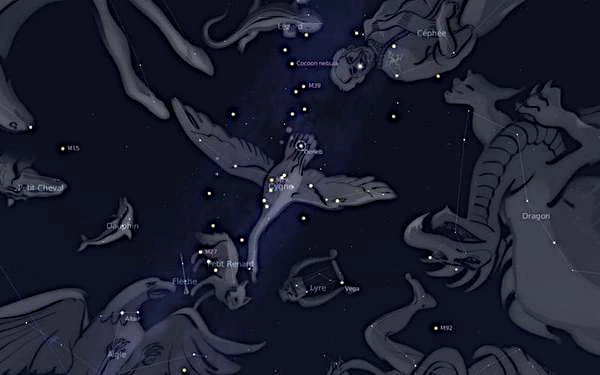
Image: Constellation Cygnus. Image reworked from Open Source Stellarium software.
Have you ever looked up into the night sky and noticed the Cygnus constellation? This constellation is easily observable in summer, and it is located in the Milky Way, the whitish band that crosses the sky.
The Swan is a fairly large constellation that represents the shape of a bird in flight, with its wings outstretched. In Greek mythology, the Swan is associated with the god Zeus, who took the form of a swan to seduce the beautiful Leda.
But aside from being a mythologically interesting constellation, the Swan also contains several fascinating celestial objects. For example, the constellation contains one of the brightest stars in the night sky, called Deneb. This star is located about 1,500 light-years from Earth, and it is one of the stars that make up the Summer Triangle.
The Swan is also home to the North America Nebula, which is a star-forming region located about 1,800 light-years from Earth. This nebula is so called because of its shape resembling a continent of North America, with a bright region in the shape of the Gulf of Mexico.
Additionally, the constellation contains several double and multiple stars, as well as star clusters that are interesting to observe with a telescope.
The Swan is also important to astronomers because it contains a star called Cygnus X-1, which was one of the first X-ray sources discovered in the sky. This star is a binary system, consisting of a massive star and a compact object that could be a black hole. Cygnus X-1 is an important source for understanding the phenomena of accretion and the formation of black holes.
In short, the Cygnus constellation is a beautiful constellation that deserves to be observed. Whether you're interested in astronomy or mythology, there's plenty to discover in this majestic constellation in the night sky.